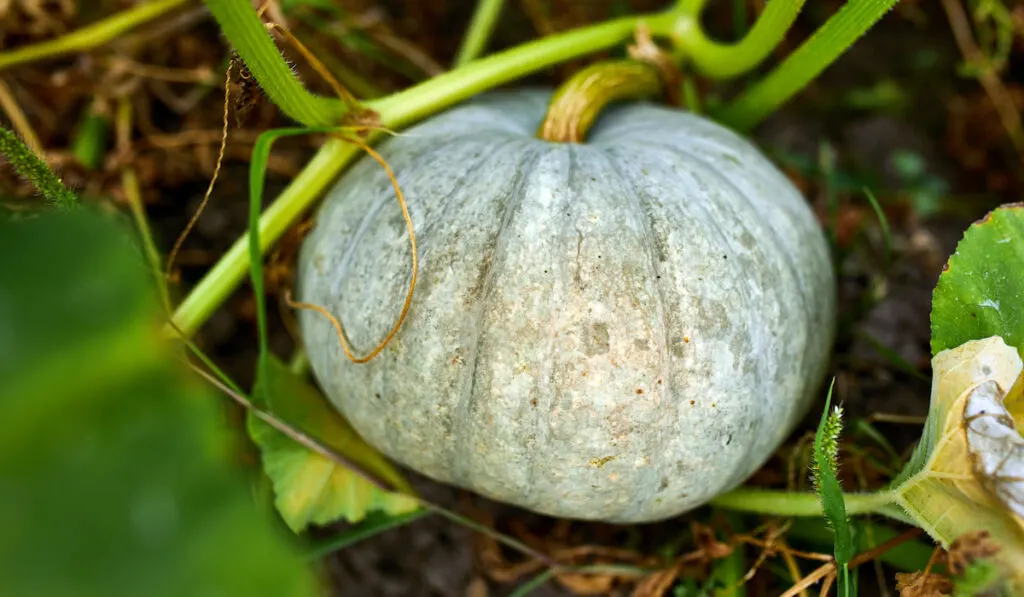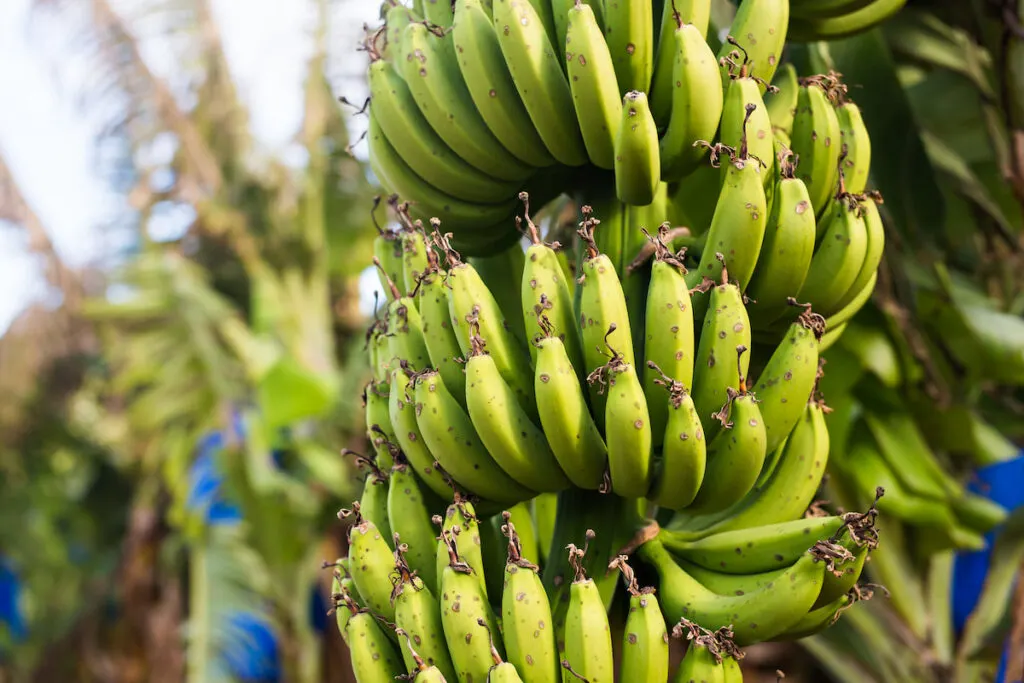Pumpkins are awesome fruits with a lot of uses. You can eat pumpkins, craft scary decorations with them, and do lots more.
What if your pumpkin is unripe, what can you do with it? Here are five ways to use unripe pumpkins.
Table of Contents
1. Ripen it Yourself
If you have unripe pumpkin fruits, you can ripen them yourself. Sometimes, your pumpkins may not ripen when attached to the plant because the growing season is over or the plant just can’t ripen the fruits anymore.
To ripen your pumpkins by yourself, keep the fruits in a warm room that is not completely dark, but does not have direct sunlight.
Do not keep the fruits directly on the ground. Instead, keep them on a wooden or plastic surface above the ground. In less than ten days, you should see traces of orange on the peels. Note that your pumpkin will be completely ripe when the peel is ripe.
Some parts of your pumpkin may ripen first before others. Parts that ripen first might start decaying before the pumpkin is fully ripe. To prevent that from happening, you should rotate and turn the pumpkin occasionally.
2. Eat It
You read that right, you can eat unripe pumpkins. Just like ripe pumpkins, unripe pumpkins are edible, but they have a lighter taste. This means that to cook with unripe pumpkins, you should make the food a little bit spicier to improve the taste.
The nutrient composition of unripe pumpkin can be found in the table below:
| S/N | Nutrients | Ripe Pumpkins | Unripe Pumpkins |
| Protein | 2% | 2% | |
| Total Carbohydrate | 12% | 14% | |
| Fat | 0.2% | 0.1% | |
| Vitamins | 19% | 16% | |
| Minerals | 16% | 15% |
(Source)
Even though unripe pumpkins have slightly fewer nutrients than ripe pumpkins, they are still nutritious. From the table above, you can see that unripe pumpkins have more total carbohydrates than ripe pumpkins. Unripe pumpkins have more starch and that is why the total carbohydrate content is higher in unripe pumpkins.
You can eat unripe pumpkins and there are a lot of recipes that you can make with both ripe and unripe pumpkins. Examples of recipes to make with unripe pumpkins can be found below:
- Granola-Pumpkin Parfait: Great for your sweet tooth. You can eat this parfait as a single snack or you can combine it with other meals for breakfast and launch.
- Pumpkin-Apple Butter (No Added Sugar): You can use this butter to make toast. It gives the bread a yummy taste.
- Pumpkin Oatmeal: This awesome meal can also be made with butternut squash or acorn squash. It is great for people who love oatmeal.
- Thai Inspired Pumpkin-Peanut Soup: This velvet soup is rich in vitamins and proteins. It is a delicious and healthy soup.
- Chocolate Cake with Pumpkin: This cake is very easy to make. The chocolate flavor will help improve the taste of the unripe pumpkin.
As you can see, you can eat unripe pumpkins. You don’t have to throw them away.
3. Give it to Your Farm Animals and Pets

Why throw your unripe pumpkins away when several animals can eat them? Animals such as cows, goats, pigs, rabbits, chinchillas, guinea pigs, sheep, etc. can eat unripe pumpkins. Even though your farm animals and pets can eat unripe pumpkins, you should not give them too much as they can contain a lot of starch.
Remember that only herbivores (and omnivorous) animals should eat unripe pumpkin as it is a plant product. Do not feed it to carnivorous animals.
4. Compost It
Composting is a process in which organic materials such as food wastes, leaves, etc. decompose into a nutrient-rich amendment product for soil. Various materials can be used in composting, but the major materials needed are those rich in carbon or nitrogen.
Fruits in general are carbon-rich, so rotting fruits are essential in composting. For unripe fruits, they are also rich in nitrogen as the green parts of plants signify the nitrogen-rich parts.
This means that if you add your unripe pumpkin into the compost pile, you are adding an item that is rich in both carbon and nitrogen.
Want to learn how to make compost with unripe pumpkin? Follow the steps below:
- Get a Compost Bin: Compost bins have holes below them so that excess water can be expelled. They also have holes at the sides to allow the flow of gases (oxygen, carbon dioxide, etc.).
- Throw in Your Organic Materials: Rotting fruits, kitchen scraps, grass blades, animal manure, etc. are recommended materials for composting. Note that you need fresh (green) and dry (brown) materials as sources of nitrogen and carbon. Unripe pumpkins will come in handy.
- Spray the Pile with Water: Once or twice weekly, you should spray water on the pile so that the microbes can act on the materials quickly. Decomposing bacteria and fungi need a moist (or humid) environment.
- Mix and Turn the Pile Regularly: The purpose of mixing and turning the pile is to allow oxygen to reach every corner and layer of the pile. Decomposing bacteria and fungi need oxygen. Without oxygen, an anaerobic process called fermentation will occur in the pile and it will give off a foul smell.
- Apply the Finished Compost in Your Soil: In less than three months, the process of composting should be over. You will know that the process of composting is over when the pile is no longer hot and the soil-like material has a fine feel on your hand.
Note that composting your unripe pumpkin should be the last thing that you should think of because there are tons of other ideas in using unripe pumpkins.
5. Leave the Fruit Attached to the Plant

If your pumpkin fruit is unripe but is still attached to the pumpkin plant, you still have a chance that it might ripen. Here are some conditions that if met, your pumpkins might ripen:
- The Plant is Still Growing: If your pumpkin plants are still growing, there is a chance that your fruits might ripen. In this case, you should wait for 7-10 days and check for improvements.
- Frost Date is Still Far: If you have more than four weeks till the frost date, you can wait for a week or two. Usually, pumpkin fruits need a high temperature to ripen. This means that you still have a little chance for your fruit to ripen (when attached to the plant).
If you think that the unripe fruits still have a chance to ripen, you should leave them attached to the plant.
Related Questions and Answers
Got any questions, here’s the answer to your question:
1. Can an Orange Pumpkin Be Unripe?
Most varieties of pumpkins become orange when they are ripe. Before plucking a pumpkin from the vine, you should make sure that every part of it is orange. Some parts of a pumpkin might ripen before other parts and it can be disappointing when you notice that your pumpkin is unripe when you have already removed it from the vine.
2. What Can You Do with Rotting Pumpkins?
You should not eat rotting pumpkins. You should throw your rotting pumpkins into a compost pile. You can also bury it in the garden soil so that it will release its nutrients gradually.
3. Which Unripe Fruits Can You Eat?

Examples of unripe fruits that you can eat are:
- Papayas
- Plantains
- Bananas
- Grapes
- Plums
Other fruits can be eaten unripe. Ask local farmers about fruits growing near you.
Final Thoughts
You can eat unripe pumpkins, feed them to your animals, make compost with them, and even ripen them by yourself. Unripe pumpkins are not wasteful; you just have to use them with the ideas written in this article.
Now that you know some awesome uses of unripe pumpkins, what will you use that green fruit for?
Resources
- https://www.gardeningknowhow.com/edible/vegetables/pumpkin/are-green-pumpkins-edible.htm
- https://recipes.sparkpeople.com/great-recipes.asp?food=unripe+pumpkin
- https://findanyanswer.com/can-you-use-unripe-pumpkin
- https://wikipedikia.org/is-unripe-pumpkin-poisonous/?amp
- https://spoonuniversity.com/lifestyle/is-it-safe-to-eat-unripe-fruit-we-list-which-you-can-and-can-t-eat
